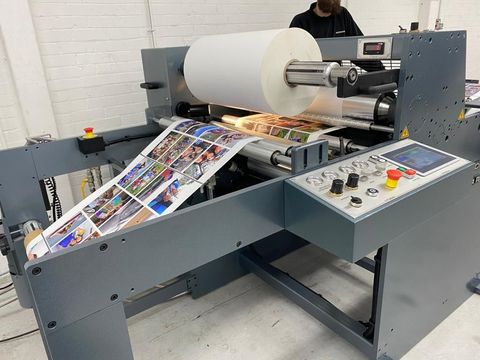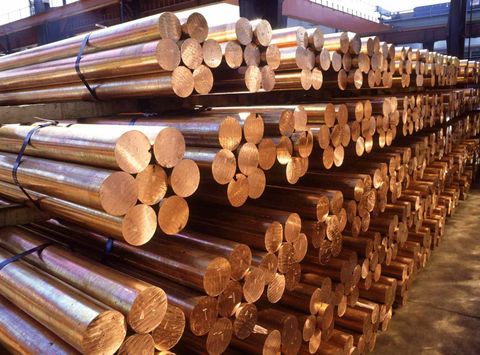A Comprehensive Guide to Stainless Steel Tubing Services
Stainless steel tubing is a crucial component in modern engineering, manufacturing, and infrastructure systems. It refers to hollow, cylindrical structures made from stainless steel—an alloy known for its strength, corrosion resistance, and durability. These tubes are used to transport fluids, gases, or solids and to support mechanical structures in a wide range of industries.
The concept exists because stainless steel provides superior performance compared to regular steel or plastic materials. Its resistance to rust, temperature changes, and pressure makes it ideal for demanding environments such as chemical processing, construction, medical applications, and food production.
Stainless steel tubing is produced in various forms including seamless, welded, and precision types. Each type is designed to meet specific operational needs—from industrial pipelines to medical catheters—making it a cornerstone of modern material technology.

Importance
Stainless steel tubing plays a significant role in today’s global economy and industrial infrastructure. Its importance lies in several key areas:
-
Durability and Strength: Stainless steel tubes maintain structural integrity even under extreme pressure, temperature, and environmental conditions.
-
Corrosion Resistance: Their ability to withstand oxidation and chemical reactions makes them essential in industries dealing with harsh or reactive substances.
-
Hygiene and Safety: In the food, beverage, and pharmaceutical sectors, stainless steel’s smooth surface helps prevent bacterial growth, ensuring sanitation.
-
Sustainability: Stainless steel is recyclable, supporting global efforts to reduce industrial waste and environmental impact.
-
Versatility: From household appliances to aerospace systems, stainless steel tubing is adaptable to countless engineering and design needs.
It benefits engineers, manufacturers, architects, and environmental planners by providing a reliable and long-lasting material that meets strict safety and performance standards.
Recent Updates
Between 2024 and 2025, several advancements and trends have shaped the stainless steel tubing industry:
-
Sustainability focus (2024): Global industries are increasingly adopting eco-friendly manufacturing processes, using recycled stainless steel to lower carbon emissions.
-
Automation and precision manufacturing (2025): Advanced robotic systems and laser welding technologies have improved the accuracy, consistency, and surface finish of stainless steel tubes.
-
High-performance alloys (2024–2025): New compositions with enhanced chromium, nickel, and molybdenum content offer greater resistance to heat and corrosion.
-
Smart inspection systems (2025): Artificial intelligence and non-destructive testing (NDT) tools are now used to detect flaws, improving safety and quality control.
-
Growth in renewable energy (2025): Stainless steel tubing demand has surged in solar, hydrogen, and wind energy sectors due to its durability and corrosion resistance.
A global market analysis published in early 2025 predicted continued growth in stainless steel tubing applications, particularly in sustainable infrastructure and medical device production.
Laws or Policies
Stainless steel tubing production and application are governed by international and national standards to ensure safety, quality, and environmental compliance. Some of the most relevant frameworks include:
-
ASTM Standards (United States): The American Society for Testing and Materials defines specifications such as ASTM A213 and A269 for seamless and welded stainless steel tubing used in various industries.
-
ASME Boiler and Pressure Vessel Code: Establishes requirements for materials used in high-pressure environments such as power plants.
-
ISO Standards (Global): International Organization for Standardization provides guidelines for testing, grading, and corrosion resistance, ensuring global compatibility.
-
European EN Standards: Govern the composition and mechanical properties of stainless steel materials within the European Union.
-
Environmental Regulations: Many governments encourage the use of recyclable and low-carbon stainless steel to meet climate objectives and reduce industrial emissions.
Compliance with these standards helps prevent accidents, improve product reliability, and ensure that tubing systems meet sustainability goals worldwide.
Tools and Resources
Various tools and resources assist professionals in designing, selecting, and maintaining stainless steel tubing systems:
-
Material selection software: Tools such as CES Selector or MatWeb help compare stainless steel grades based on strength, corrosion resistance, and thermal properties.
-
Engineering calculators: Online calculators for wall thickness, pressure rating, and flow rate help determine the correct tube specifications.
-
Design standards and databases: Organizations like ASTM, ISO, and ASME provide online libraries of standards and design guides.
-
Inspection and monitoring tools: Ultrasonic testing and digital sensors detect corrosion, cracks, or weld imperfections without damaging the tubing.
-
Sustainability databases: Environmental material impact platforms allow engineers to evaluate the carbon footprint and recyclability of stainless steel components.
These tools improve decision-making and ensure compliance with both technical and environmental requirements.
Example Table: Common Stainless Steel Grades and Their Applications
| Grade Type | Key Properties | Typical Applications |
|---|---|---|
| 304 Stainless | Excellent corrosion resistance, easy fabrication | Food processing, kitchen equipment |
| 316 Stainless | High resistance to chemicals and saltwater | Marine, chemical, and medical uses |
| 321 Stainless | Heat-resistant, good weldability | Aerospace, exhaust systems |
| 410 Stainless | High strength, moderate corrosion resistance | Tools, mechanical parts |
| Duplex Grades | Strong and corrosion-resistant | Oil and gas, power generation |
FAQs
What are the main types of stainless steel tubing?
The main types include seamless tubing, which is formed from solid stainless steel billets; welded tubing, made from rolled sheets joined along a seam; and precision tubing, used in specialized applications like medical devices.
What makes stainless steel tubing corrosion-resistant?
The chromium content in stainless steel forms a passive oxide layer that prevents rust and chemical corrosion, making it ideal for harsh environments.
Is stainless steel tubing environmentally sustainable?
Yes, stainless steel is 100% recyclable and can be reused without losing its quality. Many industries now use recycled stainless steel to reduce emissions.
What industries rely most on stainless steel tubing?
Key sectors include construction, energy, transportation, food processing, medical equipment manufacturing, and water treatment facilities.
How is quality tested in stainless steel tubing?
Testing methods include hydrostatic testing, eddy current inspection, ultrasonic testing, and dimensional verification to ensure compliance with safety and performance standards.
Conclusion
Stainless steel tubing stands as one of the most reliable and sustainable materials in modern engineering. Its strength, resistance to corrosion, and adaptability make it indispensable across countless industries—from construction to healthcare.
Recent innovations in manufacturing, smart inspection systems, and eco-friendly production processes have positioned stainless steel tubing as a critical material for the future of sustainable infrastructure.
With well-established international standards and growing environmental awareness, understanding stainless steel tubing’s functions, regulations, and applications helps engineers, designers, and policymakers make informed decisions that balance performance with responsibility.






